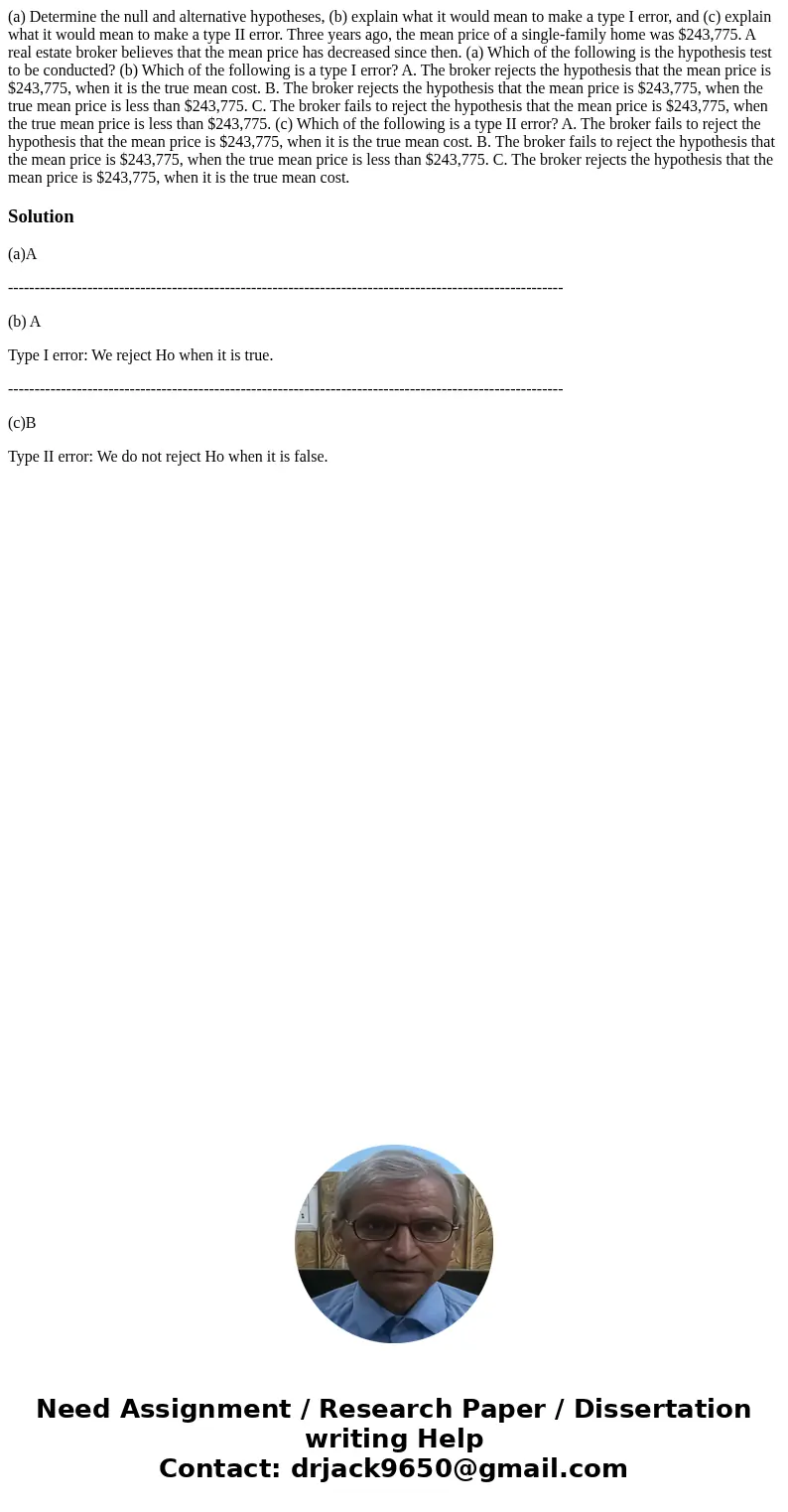a Determine the null and alternative hypotheses b explain wh
(a) Determine the null and alternative hypotheses, (b) explain what it would mean to make a type I error, and (c) explain what it would mean to make a type II error. Three years ago, the mean price of a single-family home was $243,775. A real estate broker believes that the mean price has decreased since then. (a) Which of the following is the hypothesis test to be conducted? (b) Which of the following is a type I error? A. The broker rejects the hypothesis that the mean price is $243,775, when it is the true mean cost. B. The broker rejects the hypothesis that the mean price is $243,775, when the true mean price is less than $243,775. C. The broker fails to reject the hypothesis that the mean price is $243,775, when the true mean price is less than $243,775. (c) Which of the following is a type II error? A. The broker fails to reject the hypothesis that the mean price is $243,775, when it is the true mean cost. B. The broker fails to reject the hypothesis that the mean price is $243,775, when the true mean price is less than $243,775. C. The broker rejects the hypothesis that the mean price is $243,775, when it is the true mean cost. 
Solution
(a)A
---------------------------------------------------------------------------------------------------------
(b) A
Type I error: We reject Ho when it is true.
---------------------------------------------------------------------------------------------------------
(c)B
Type II error: We do not reject Ho when it is false.

 Homework Sourse
Homework Sourse